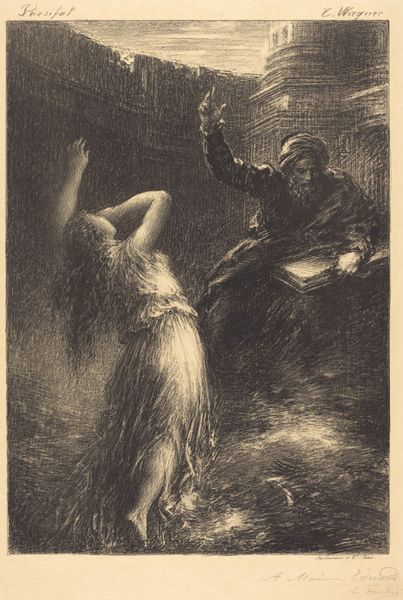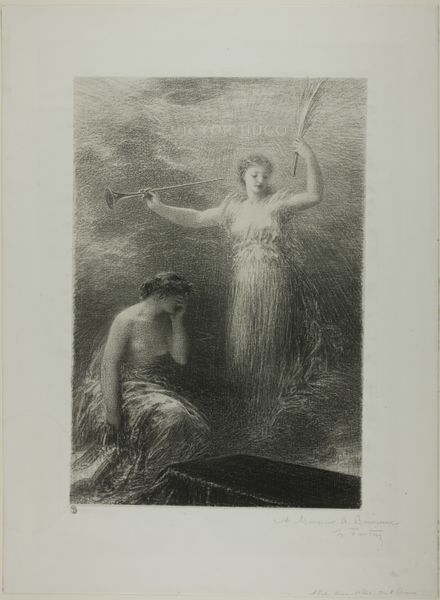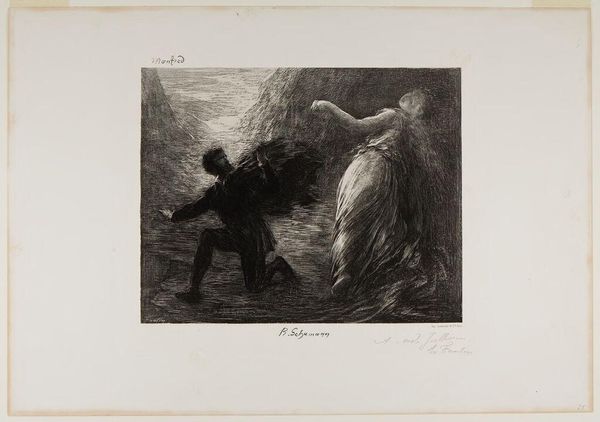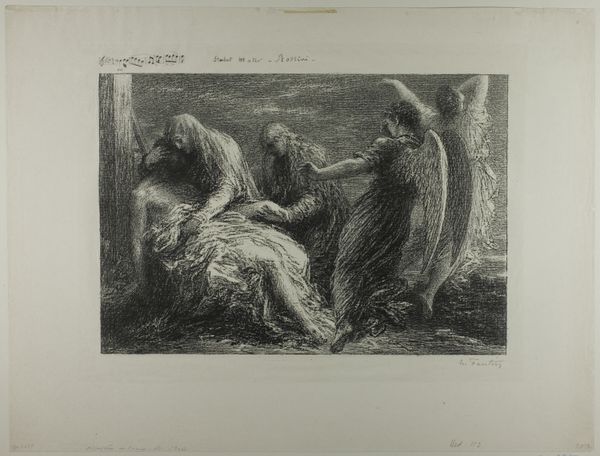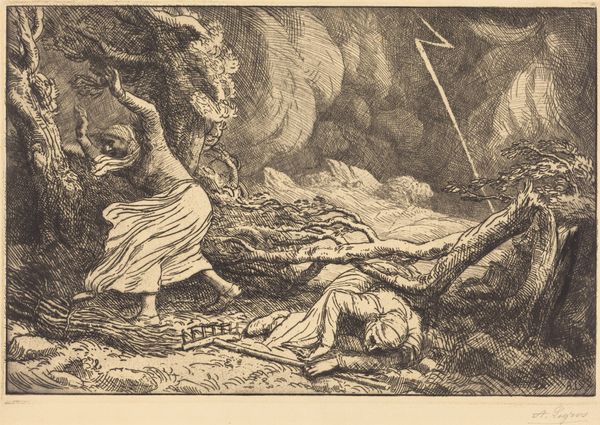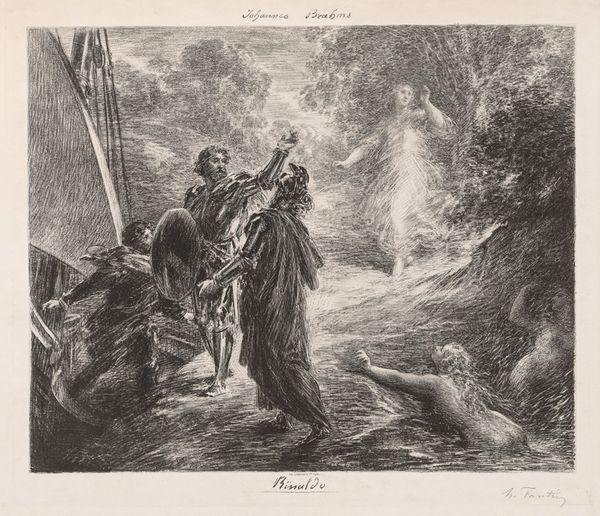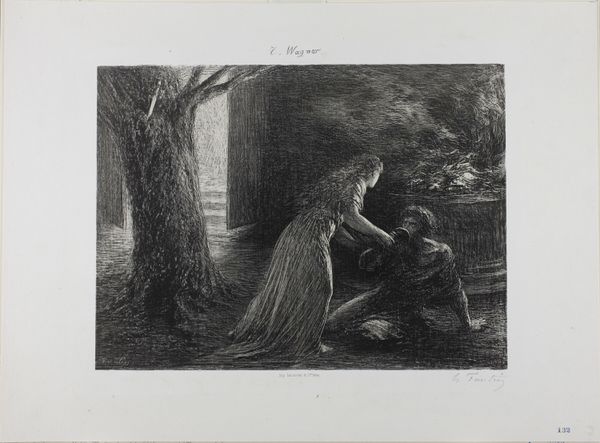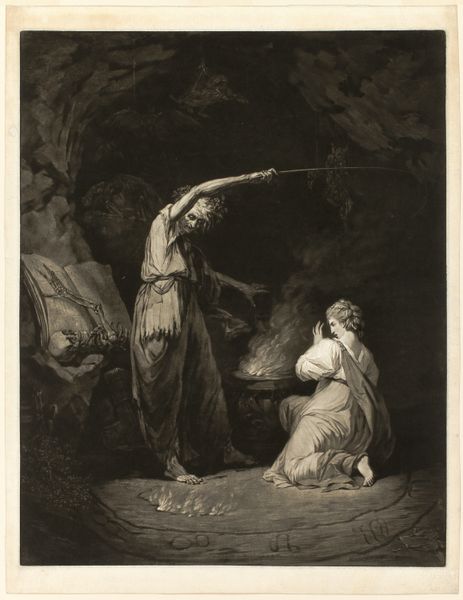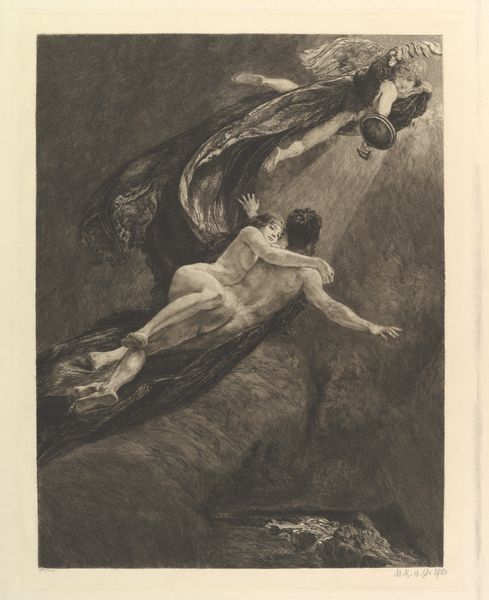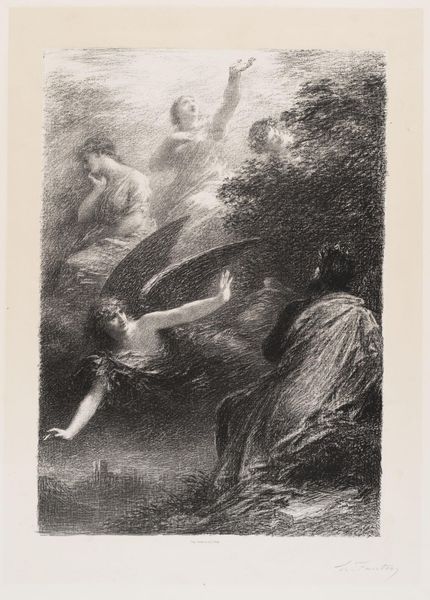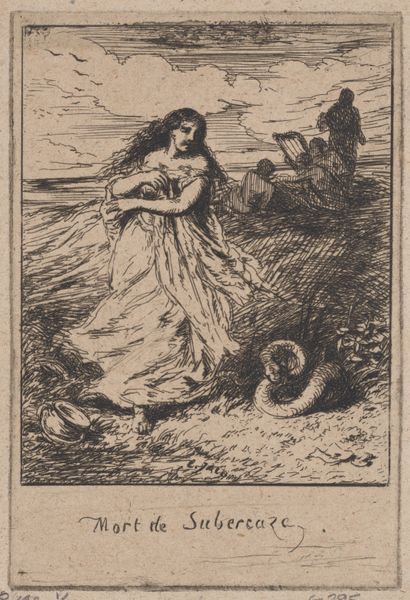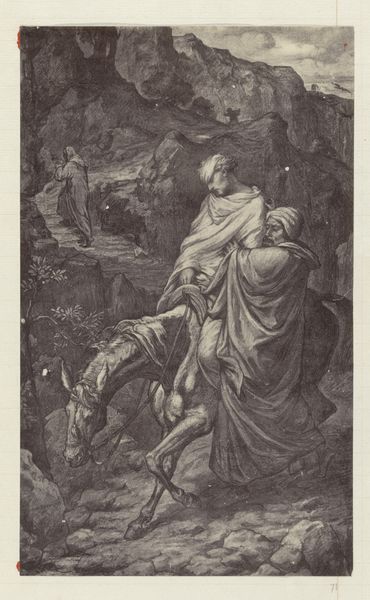
Copyright: National Gallery of Art: CC0 1.0
Curator: Henri Fantin-Latour, a rather prolific artist we know primarily for his still lifes, also produced a series of artworks inspired by literature and music. This print, “Manfred and Astarte,” created in 1881, speaks to Lord Byron’s dramatic poem "Manfred." Editor: Whoa. This image has such a haunting vibe. The heavy darkness closing in... the almost desperate plea from Manfred. I can practically feel the raw emotion crackling in the air, heavy as static electricity. Curator: The use of etching here is masterful in conveying that sense of overwhelming despair, don’t you think? Fantin-Latour captured a moment steeped in Romantic ideals—introspection, passion, the sublime confrontation with nature and the supernatural. It portrays Manfred’s plea to the spirit Astarte. The etching captures a moment of spiritual anguish. Editor: Anguish is spot on. Notice the woman, Astarte. Her gaze directed skyward. I love the textural contrast between her almost ethereal presence and Manfred’s hunched, earthly form, his dark clothing blending into the shadowy landscape. Is this an acknowledgment that hope resides somewhere outside this earthy world of pain? Curator: Perhaps, and the historical context certainly informs how audiences understood the work. Remember, the late 19th century was obsessed with spiritualism and the occult. Fantin-Latour positions Astarte, an ancient near-eastern goddess figure associated with sexuality and war as a luminous almost unattainable object of Manfred’s desire. His works were often controversial for presenting potentially subversive material with a romantic allure, but his romantic works earned a dedicated following during the fin de siecle. Editor: Knowing Fantin-Latour's influences and social context helps to reveal its multi-layered complexity. Even so, the scene remains a striking depiction of longing. The print just whispers possibilities, leaving you wanting to ponder what happens next. Curator: Precisely. It captures not only a moment from Byron's poem but also something fundamental about human experience: our yearning for connection, our confrontation with mortality, our search for meaning in the face of the void. Editor: It certainly sparks my imagination! And it proves Fantin-Latour's creative range goes way beyond flower paintings. Curator: Indeed! Thanks for that beautiful insight.
Comments
No comments
Be the first to comment and join the conversation on the ultimate creative platform.
